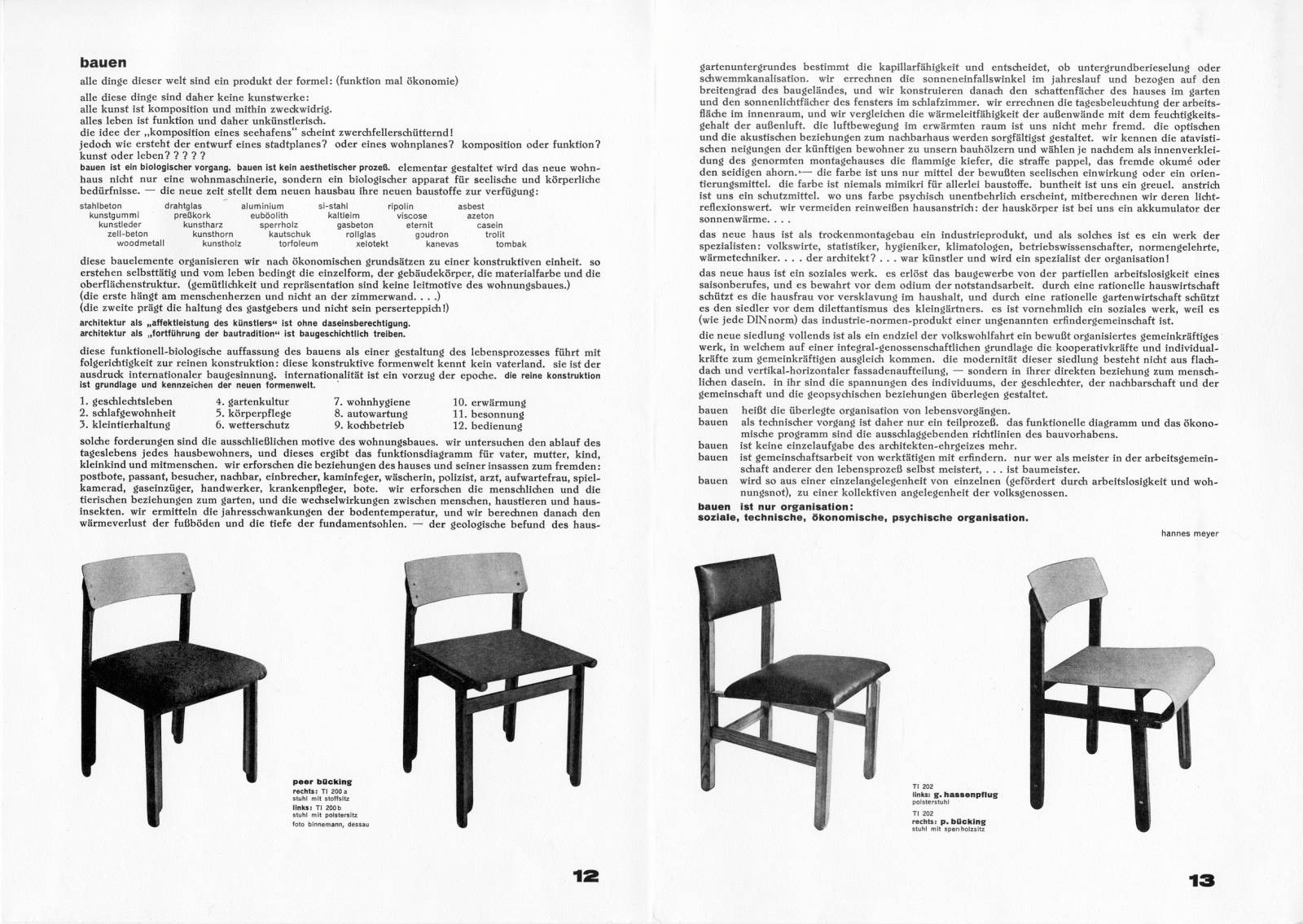Ciclo di conferenze
Daniel Talesnik:
Hannes Meyer’s Materials Matter
Lecture Series Architecture as Living Matter
While the discourse about-and-around materials of some of the Bauhaus teachers was visual, and sometimes grounded in imported ideas from Constructivism like Faktura, architect Hannes Meyer’s approach was more ideological and technical, and his interest focused on structural capacity, heat resistance, and other measurable characteristics. Before he landed in the Bauhaus, Meyer’s 1926 manifesto “The New World,” made a case for modern architecture by listing “new” building materials. In his 1928 Bauhaus-period manifesto “Building,” the list was expanded from 19 to 30 materials: synthetic resin, Eternit, and rolled glass were part of an up-to-date palette of materials from where to mix-and-match. Guided by economic constraints, “modern” for him was about organizing these materials into a coherent whole. Despite the excitement, many materials in the list were not new, which leads to question if Meyer was advocating for the use of new materials, or for their modern deployment. Also, it was unclear if the enumerated materials were chosen for what they could do, or for what they represented. But then again, what did they represent? In 1930, when Meyer moved to the Soviet Union, what was once attempted as a critical stance towards materials became militant. In a lecture in 1931 he justified the scarcity of new buildings of steel and concrete in the Soviet Union by stating that local materials like mud, wood, and stone where perfectly suitable, and that materials in a national economy had to be understood as deficit units. What remains constant is that listing materials was still filling in for an argument. Can we read Meyer’s political shifts by strictly analyzing his changing approach to materials? He had traveled in 1930 to the Soviet Union with a food recipe, but did not find the ingredients. Then again, had he limited himself before to simply picking and arranging materials? Meyer’s approach to materials focused on their use and how they functioned together. This perspective opens a relationist interpretation that could be associated with new materialism. Looking back, we can see that this reinforces Meyer’s new, modern view.
Daniel Talesnik is an architect from the Universidad Católica de Chile (2006) and holds a PhD in History and Theory of Architecture from Columbia University (2016), awarded with the dissertation “The Itinerant Red Bauhaus, or the Third Emigration.” He has taught at the Universidad Católica de Chile, Columbia University, and Illinois Institute of Technology. He currently teaches at the Technische Universität München (TUM), where he is also a curator at the Architekturmuseum der TUM, where he has curated Access for All: São Paulo’s Architectural Infrastructures (2019), and Who’s Next? Homelessness, Architecture, and Cities (2021-22).
06 luglio 2022, ore 18:00
This event will take place online.
To participate online please register in advance via Zoom:
https://zoom.us/meeting/register/tJAlce6hrDgrGNZUeHG1AqzYFEA4xS_rBMRn
After registering, you will receive a confirmation email containing information about joining the meeting.
Avviso
Questo evento viene documentato fotograficamente e/o attraverso riprese video. Qualora non dovesse essere d’accordo con l’utilizzo di immagini in cui potrebbe essere riconoscibile, da parte del Kunsthistorisches Institut in Florenz a scopo di documentazione degli eventi e di pubbliche relazioni (p.e. social media) la preghiamo gentilmente di comunicarcelo.




